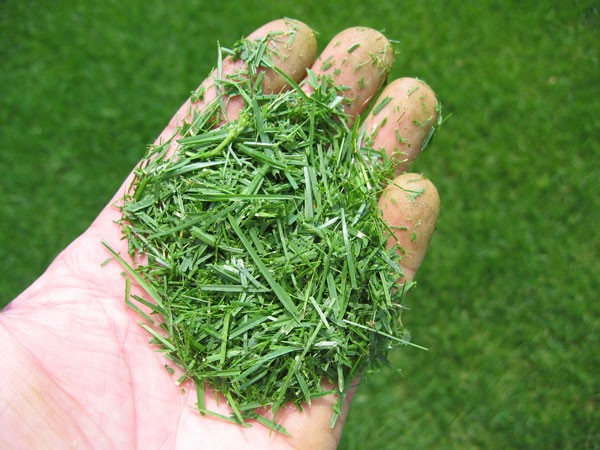Specialty stores also offer so-called mulching mowers. Other lawn mowers come with a mulching kit or a corresponding switch-over function. But what does that actually mean? And is it really better for the lawn than conventional lawn mowing?
With mulch mowing, the grass clippings are not collected, but simply left on the lawn. Oh, you’re saying, then it’s just not raked off? Wrong, because mulch mowing doesn’t leave anything on top of the grasses; instead, the grass clippings are supposed to trickle down to the ground between the grasses.
The point behind this: As mulch, the clippings land on top of the turf, decompose, and are then available to the blades as green manure. The nutrients that you remove from the grasses by cutting remain in place. Separate fertilizing of the lawn is no longer necessary. A very ecological principle.
Practical for you: When working, the annoying emptying of the catch basket is eliminated, as is the need to dispose of the clippings. Even large areas can be mowed really quickly. Furthermore, you save money and time because you no longer have to buy and spread special fertilizer.
Requirements for mulch mowing

The crux of the matter is that the cut stalks must be short enough to actually trickle down between the lawn grasses onto the scar. You can accomplish this by mowing very frequently and cutting only a little bit of the grasses at a time. Of course, this is counterproductive if you want to save yourself work when mowing.
That’s why there are special mulching mowers or the models that are converted with mulching kit or mulching kit. Other lawn mowers are equipped with a switch function that allows either catching, ejecting or mulching.
Technically, this is achieved by special lawn mower designs: depending on the manufacturer, the mower housing and/or the blade is designed in such a way that the clippings are swirled around several times and thus chopped up into tiny particles. Some mulching mowers additionally generate an air current that blows the stalk pieces to where they belong at the end of the chopping phase: between the grasses.
There, they deprive the lawn of neither light nor air. Instead, they shade the soil as a mulch layer and reduce the evaporation of water from the soil in sunny and dry conditions. Microorganisms break down the stalk pieces. The end product is available to the lawn again in the form of nutrients.
What to consider when mulch mowing:
- Regular mowing is essential to avoid creating too much mulch per cut at one time. As a rule of thumb, mulch mowing is due whenever the lawn has grown 6 cm high. Then cut it down to the usual height of 3-4 cm.
- If the lawn has grown taller, for example during a vacation, it should be gradually cut back to the usual height at intervals of several days. If this were to be done at the first mowing, too much mulch would accumulate, which would then remain in lumps on the lawn.
- After rainfall, wait until the lawn is dry again. Wet mulch material can also lead to the formation of clumps.
- Only high-quality machines with sophisticated mulching technology can be expected to turn the clippings into optimal mulch material.

